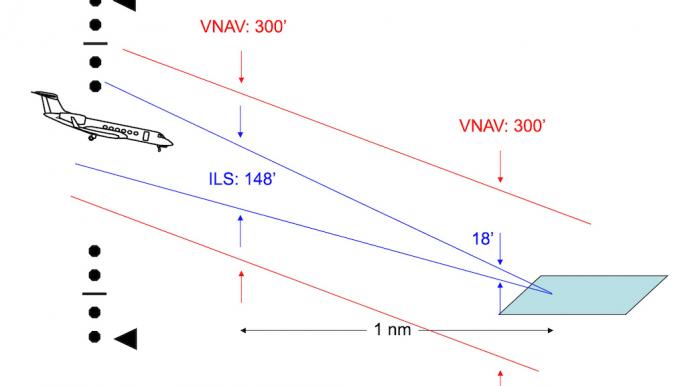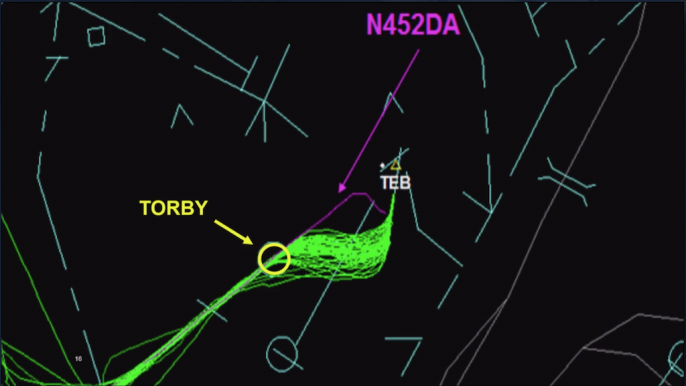
The first part of this article looked at trying to solve problems that appear to be impossible.
The old saying “When all you have is a hammer everything starts to look like a nail” can be turned around and still be equally valid: “When every nail is designed to be driven by a hammer, all other tools appear to be of little use.” In aviation we are constantly inventing new tools and even new procedures for the challenges we’ve already had. We as aviators need to be open to new ways of doing things.
Decades ago, we thought we solved the dive and die problem with the visual descent points (VDP), but the accidents continued so we invented the continuous descent final approach (CDFA) using an artificial glidepath generated by the aircraft’s own VNAV system. “It’s just like an ILS!” we told ourselves. But it isn’t. The beam width of an ILS narrows as you get closer to the ground. Full-scale deflection in the glideslope, for example, narrows from 148 ft. at 1 nm to 18 ft. at the runway threshold in a typical installation. But a typical VNAV gives you 300 ft. at both distances. Flying a dot low on an ILS gets you to the runway a little short of the touchdown zone. With a VNAV, you may end up in the approach lights or even shorter. Our problem statement becomes: Why can’t we have an ILS to more runways?

If your aircraft is equipped to take advantage of a wide area augmentation system (WAAS), such as the satellite-based augmentation system (SBAS) used with GPS, you can fly a localizer performance with vertical guidance (LPV) approach. Commercial operators will need a C052 OpSpec or MSpec authorization. Private operators may also need an authorization in some countries outside the U.S. That’s a lot of acronyms, but the bottom line is that if you have LPV, you have a glidepath that mimics the narrowing width of an ILS, even without an ILS. We have untied the Gordian knot that appeared to be tied to a piece of ground-based technology by redefining the problem to: Why can’t we have a narrowing glidepath to more runways? Now we can.
The aviation community has a long list of Gordian knots solved by redefining the problem or by looking at the environment from a new perspective. The list is long but here are a few of our untied knots:
‰“Why can’t many pilots recover from a stall without losing an inch of altitude?” has become “Pilots should break the stall and worry about altitude once that is done.”
‰“Why can’t pilots figure out their wake turbulence is a problem and keep an eye out for other aircraft flying the same oceanic track?” has become “Pilots should employ a strategic lateral offset procedure (SLOP) whenever flying oceanic routes.”
‰“Why can’t pilots see and avoid perfectly?” has become the traffic collision and avoidance system (TCAS).
I’m sure you can think of a lot of similar successes. But we should think of the many Gordian knots still lurking out there.
Other Gordian Knots in Aviation in Need of Solutions
It is fashionable to blame pilots, mechanics and other aviators for complacency when researching aircraft accidents. This kind of blame is usually well deserved and the act of pointing fingers serves to remind us pilots, mechanics and other aviators to remain vigilant. But there is another kind of complacency that hits aircraft manufacturers and regulators as well as us operators.
We all tend to accept Gordian knots as given. “There’s nothing to be done about that.”
Speaking as one of those on the operational side of aviation, I think the complacency problem may be a bigger threat for those sitting behind desks. Allow me to provide an example and perhaps you will agree.

I didn’t think circle-to-land procedures were much of a problem during my 20-year Air Force career. We taught them in our aircraft as well as simulators and when flying them in the real world, we encouraged our pilots to fly as high as possible, up to normal traffic pattern altitude, and as wide as possible, as wide as a normal traffic pattern. The aim was to make it as normal as possible. Now, as a civilian, I think the way we teach circle-to-land procedures is asking for trouble and history is on my side. We give regular check rides where the pilot must fly as low as possible and as tight as possible, even though it requires a turn to final that is unstable. (You cannot roll out at 500 ft. aligned with the runway on a 3-deg. glidepath from most circling approaches flown at minimums.) No wonder we seem to crash airplanes on VFR days that didn’t require such tight maneuvering.
On May 15, 2017, a pair of poorly qualified Learjet 35A pilots attempted one of the most demanding arrivals in modern aviation while wrongly thinking they needed to fly as low and as close as possible to their landing runway. The crew was cleared to fly the Teterboro Airport (KTEB), New Jersey, ILS Runway 6, circle to land Runway 1, with the winds at 320 deg. gusting to 32 kt. It seems everyone else that day understood that the purpose of the maneuver is to align the aircraft with the landing runway safely. The accident crew reverted to their instrument check ride procedures and failed, killing themselves in the process. So, we have a problem: Pilots are confused between the circle-to-land check ride maneuver in poor weather and the real-life circle-to-land with good visibility. In the former instance, the pilot has the option of diverting if the conditions make circling impossible. In the latter case, the pilots don’t need to fly low and tight.
The NTSB missed the chance to identify the Gordian knot and instead focused on the pilot’s attempt to salvage an unstable approach, inadequate preflight planning and the lack of an approach briefing. I’ve spoken to a few NTSB members and pointed out the Gordian knot specifically: We don’t train the circle-to-land maneuver correctly and the evaluation criteria encourages a misunderstanding of the purpose of the maneuver. The most common answer was that this is a matter for someone else to tackle. The Gordian knot is too difficult to untie.
I’m sure you can think of many more. I keep a long list of issues that I would solve if I were king.
My first regal decree would be to require every aircraft to have angle of attack (AoA) indicators and pilots should be trained to use them for every takeoff and landing. We are all taught that minimum airspeed is critical but not that a computed minimum airspeed is useless if the weight of the aircraft isn’t computed accurately. (You can fool the airspeed indicator, but the AoA indicator isn’t so easily misled.) Next on my hit list is to require visibility minimums for takeoff and landing, even for FAR Part 91 operators. (You can send your angry emails to me; please leave the publishers alone.) Don’t get me started on “demonstrated” crosswind limits and “advisory” gust additives. My list goes on and on.
I think the common denominator for all Gordian knots solved and yet to be solved is that most of us accept them as unsolvable until a visionary either slices it with a single wave of a sharp sword or loosens the rope to allow it to be untied with a little work. We are all blind until someone refuses to accept the problem as stated. There are a ton of solutions out there in the trenches. It is up to us as operators to push those solutions, even if the bureaucrats push back.






Comments